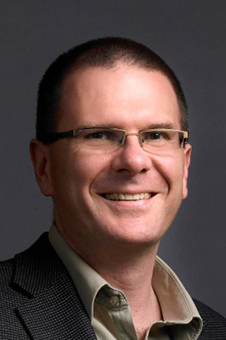Scientists have discovered how and why some genetic mutations can contribute to the cause of diseases like autism and brain malformations.
The study, published in the prestigious international journal Science, started by looking at very basic cell biology and found that cells in the brain differ in very fundamental ways from those in other body tissues.

Professor Stephen Robertson
Co-author Professor Stephen Robertson, Curekids Professor of Paediatric Genetics in Otago's Department of Women's and Children's Health, describes the findings as “a big step”.
“Many neurodevelopmental conditions that affect children and that have a genetic basis seem to be caused by alterations in genes that are normally used by multiple different organs, not just the brain.
“The question as to why it is only the brain that is affected has puzzled scientists and clinicians for a long time. In this work the team asked the question 'does the brain re-direct the functions of these genes to different tasks as opposed to what they do in other organs?',” he says.
The study was led by Dr Adam O'Neill, a former PhD student in Professor Robertson's lab, working in the lab of Professor Magdalena Götz, a world-renowned neurobiologist in the Institute of Stem Cell Research at Helmholtz Center Munich, Germany.
The researchers focused on a subcellular body called the centrosome.
“The centrosome can be likened to the compass of the cell and to a large part determines the direction in which a cell might divide and migrate as an organ like the brain develops. What they found was that the brain centrosome has a very different composition – in terms of proteins – compared to cell types in other organs,” Professor Robertson says.
The group found cell proteins implicated in certain brain conditions located to this uniquely composed brain centrosomal structure.
Using a particular brain malformation called periventricular neuronal heterotopia as their main example, they showed that mutations in the genes that produce these proteins damage centrosomal functions in the brain, but not in other organs. Periventricular neuronal heterotopia features misplacement of grey matter as the brain develops, frequently resulting in epilepsy and sometimes delays in development.
“Discovering that the brain centrosome is very different to the centrosome in other cells casts it in a whole new light. The neuronal centrosome is critical to build a brain correctly and so understanding the composition of this cellular compass is critical.
“Realising what specific elements of the compass can contribute to brain diseases like autism and periventricular neuronal heterotopia opens up the intriguing possibility of re-orienting its activity to lead to improvements in brain function for these children,” Professor Robertson says.
Publication details:
Spatial centrosome proteome of human neural cells uncovers disease relevant heterogeneity
Adam C O'Neill, Fatma Uzbas, Giulia Antognolli, Florencia Merino, Kalina Draganova, Alex Jack, Sirui Zhang, Giorgia Pedini, Julia P Schessner, Kimberly Cramer, Aloys Schepers, Fabian Metzger, Miriam Esgleas, Pawel Smialowski, Renzo Guerrini, Sven Falk, Regina Feederle, Saskia Freytag, Zefeng Wang,
Melanie Bahlo, Ralf Jungmann, Claudia Bagni, Georg H H Borner, Stephen P Robertson, Stefanie M Hauck and Magdalena Gotz
Science
DOI: 10.1126/science.abf9088
For more information please contact:
Professor Stephen Robertson
Curekids Professor of Paediatric Genetics
Department of Women's and Children's Health
University of Otago
Email stephen.robertson@otago.ac.nz
Ellie Rowley
Communications Adviser
University of Otago
Mob +64 21 278 8200
Email ellie.rowley@otago.ac.nz
Find an Otago Expert
Use our Media Expertise Database to find an Otago researcher for media comment.
